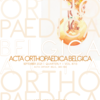Digital templating in total hip arthroplasty using contralateral healthy hip results in decreased accuracy
Total hip arthroplasty ; digital templating ; osteoarthritis ; calibration ; TraumaCAD
Published online: Nov 22 2021
Abstract
The accuracy of pre-operative digital templating for total hip arthroplasty (THA) using the diseased versus unaffected contralateral joint remains unclear. As such, we devised a study to compare templating precision between the operated hip joint versus the healthy side for patients with osteoarthritis (OA). The study hypothesis was that preoperative templating accuracy of THA on the ipsilateral diseased hip joint would be higher compared to the contralateral healthy hip in patients with OA. We retrospectively reviewed 100 patients who underwent THA for unilateral OA at our center from January 2018 to January 2020. Retrospective preoperative digital templating was performed separately on both the operated hip joint and the healthy contralateral hip joint by a single surgeon who was blinded by the in-situ components sizes. Accuracy of each group was compared to the implanted components. Assessment of the 100 included cases demonstrated superior acetabular component size prediction when templating was performed using the diseased hip compared to the healthy contralateral side (68.0% versus 51.0%, p<0.001). No differences between the cohorts were found regarding templating accuracy of femoral stem sizes (72.0% and 69.0%, p=0.375) or neck offset (73.0% and 69.0%, p=0.289). Templating acetabular cup size using the ipsilateral diseased hip is more accurate than using the contralateral healthy hip in patients with unilateral OA.
